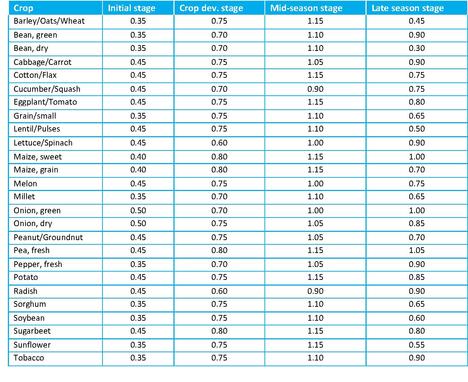Tool 11
TOOL 11. ASSESSING DEMAND FOR WATER FOR DIFFERENT USES
To assess water demand for domestic use, livestock and crops.
OBJECTIVE
To assess water demand for domestic use, livestock and crops.
METHOD
People have different water demands for different uses of water. With the methods presented here, the current and future water demands for different uses (domestic, livestock, crops, small industry) can be assessed.
Domestic water demand
The water demand for domestic activities includes primarily:
- Water for drinking.
- Water for the preparation of food.
- Water for bathing and sanitation.
To estimate the amount of water needed to meet domestic use, it is important to know the population size and dynamics of growth, as well as the per capita demand for water. This can be obtained from secondary data sources or by doing primary data collection through conducting a census.
Box 3 Water demand for domestic use

Livestock water demand
To estimate the water demand for the animals, the number of animals per household and the species must be determined. The water demand can be determined by multiplying the number of animals with the daily water demand per animal.
The number of animals can be assessed though a household questionnaire (seeTool 12) or can be estimated through key informant interviews of focus group discussions (see Tool 2 and Tool 3).
The amount of water needed / recommended for each species can be obtained from secondary sources (such as the local livestock department).
Crop water requirements
In order to assess crop water requirements, the type of crops grown, their growth season and the area planted for each one of them has to be determined.
For each crop, the crop water requirements can be calculated using the following formula:
Etc = Eto * kc
kc = crop coefficient
ETo = reference evapo-transpiration (mm/day)
Etc = crop water needs (mm/day)
The crop factor, Kc, mainly depends on:
- The type of crop.
- The growth stage of the crop.
- The climate.
It can be obtained from secondary sources (as example, please see Table 10).
Table 10 - Overview of crop factors

Source: FAO, 1986
Table 10 shows average Kc values for the various crops and growth stages. The values indicated above should be reduced by 0.05 if the relative humidity is high (RH > 80%) and the wind speed is low (u < 2 m/sec). The values should be increased by 0.05 if the relative humidity is low (RH < 50%) and the wind speed is high (u > 5 m/sec). (FAO, 1986).
The ETo is the rate of evapo-transpiration from a large area, covered by green grass, eight to fifteen cm tall, which grows actively, completely shades the ground and which is not short of water. It depends on sunshine, temperature, humidity and wind speed. It can generally be obtained from a meteorological station.
Water demand for small enterprises
Households may be involved in small scale industrial activities, such as food preparation for sales, car washes, laundry, brick making, beer brewing etc. These activities should be identified and its demand for water characterised. Claims related to this type of water use, must be evaluated on a case by case basis, taking into account the type of activity, water consumption by activity and whether this is performed by a significant proportion of the population or only a few.
Note: As with any water supply project, it is important to take into account the water demands from institutions like schools, health posts, police posts, etc.
BASED ON
Tool 1.1.1 to 1.1.4 in: CINARA, 2007. Lineamientos para el diseño y administracion de sistemas de abastecimiento de agua bajo el enfoque de usos multiples, Cali: Instituto Cinara – Universidad del Valle. Available at:http://www.musgroup.net/home/activities/the_cpwf_mus_project/basins_countries/andean_basin_cpwf_mus_studies/andes_in_english/andes_basin_outputs/guidelines_for_planning_and_management_of_mus_systems/(language)/eng-GB .
SUGGESTED FURTHER READING
Brouwer, C. and Heibloem, M. 1986. Irrigation water management, Training manual no. 3, Rome: FAO. Available at:http://www.fao.org/docrep/S2022E/s2022e00.htm#Contents .
Howard, G. and Bartram, J. 2003. Domestic Water Quantity, Service Level and Health. Geneva: World Health Organization.
